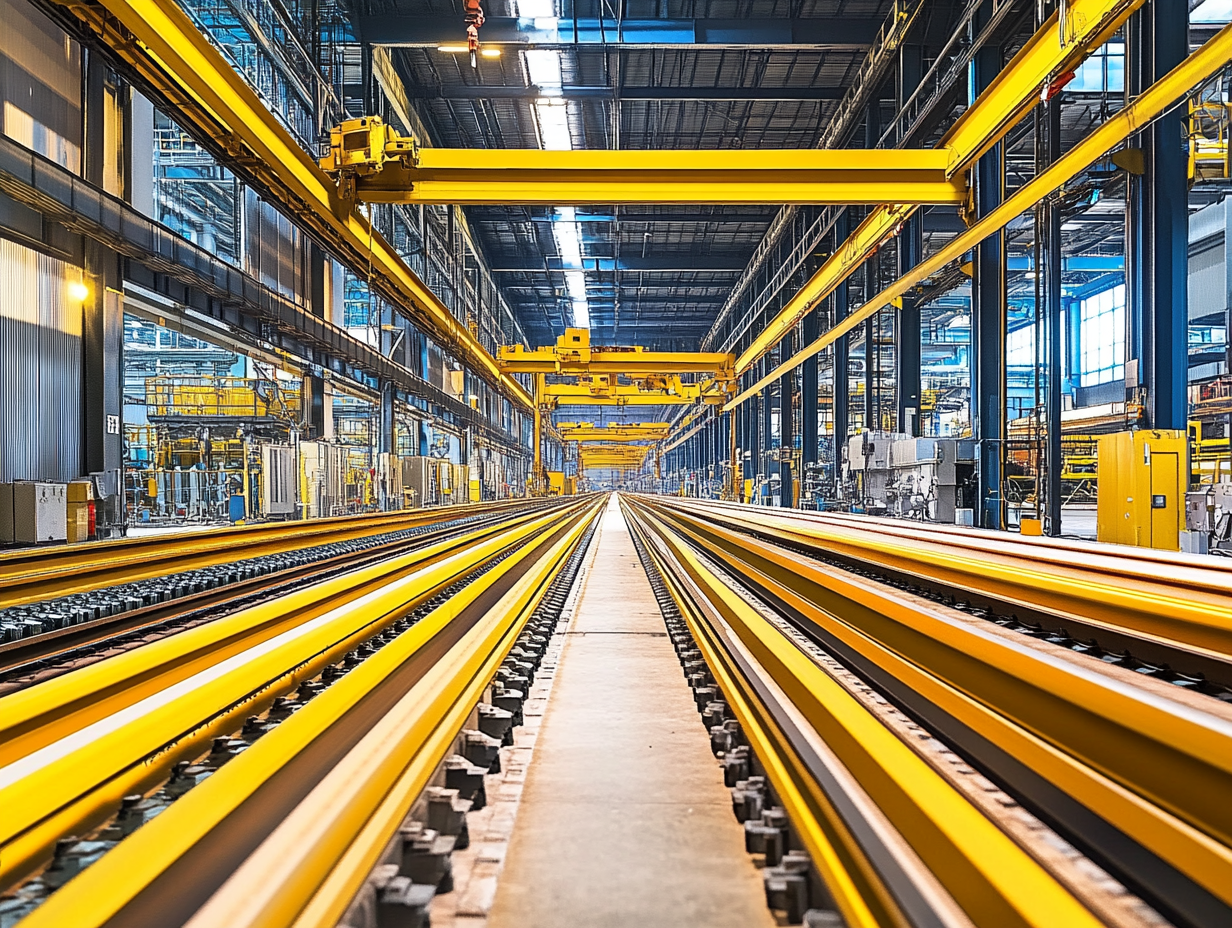

Crane rails are designed to suit various industrial applications, and their proper selection directly impacts the performance, safety, and longevity of crane systems. In this blog, we will explore the types of crane rails, their technical features, and their applications across industries.
1. Major Types of Crane Rails
a) DIN 536 A and DIN 536 F Rails:
- DIN 536 A: Ideal for heavy loads with a wider base area.
- DIN 536 F: Features a narrower base for compact designs.
b) Railway Rails:
- Commonly used for lighter loads and small-scale applications.
- Cost-effective but more prone to wear.
c) Custom Crane Rails:
- Tailored to specific user requirements.
- Used in applications requiring high precision or corrosion resistance.
2. Technical Features of Crane Rails
a) Material Durability:
- Mostly made of alloy steel.
- Resistant to wear and heavy loads.
b) Rail Profiles:
- T-profile, I-profile, and flat profiles are chosen based on load capacities.
c) Surface Finishing:
- Rails are typically ground to ensure smooth movement.
3. Applications of Crane Rails
a) Automotive Industry:
- Used in assembly lines to transport heavy equipment.
b) Ports and Maritime Industry:
- Preferred for loading and unloading containers.
c) Steel Industry:
- Heavy raw materials are moved using durable rail systems.
d) Warehousing and Logistics:
- Lighter rails are used for material handling.
4. Importance of Selecting the Right Crane Rail
a) Safe and Stable Movement:
- Proper rail selection enhances the stability and safety of crane systems.
b) Cost and Performance Balance:
- Choosing the right rail for the application reduces costs and ensures long-term performance.
c) Reduced Maintenance Needs:
- High-quality rails reduce maintenance frequency and improve operational efficiency.
- The variety and applications of crane rails are tailored to meet the diverse needs of industrial systems. Selecting the right rail is crucial for ensuring the safety and longevity of these systems.

